QuestionHello, I rescued three young Parakeets recently, none have clipped wings, one has a white Cere (I think that is what it is called) who was a mother before, another one has a brown Cere and the other one who looks the youngest has a purple blueish Cere. So I am assuming I have two females and one baby male? So since babies may come, what is the minimum cage size I should have for all of them?
Right now they are in the cage they came with which is 17" Wide by 17" Long by 32" High. I think they are suppose to have a longer cage to be happy. They have a nesting box at the bottom, five perches, and two swings with a couple little toys that get switched around to prevent boredom. Any recommendations on how their cage should be set up?
Oh also the one with a purple blue Cere, his tail is much shorter than the others, is that just because he is a baby?
AnswerHi, Kiko,
Do you have any idea how old these birds are? If they are less than 1 year old, I recommend you allow them to grow up/mature before allowing them to reproduce. This means removing the nesting box from the cage. A nesting box is a cue to a pair of birds to go to nest. Whenever you do eventually put up a nesting box, it should be mounted outside the cage with only the entrance hole available inside the cage for the birds to go in/out. This will also make more room inside the cage. In addition, in my 19 years of experience breeding parakeets (as well as other species of parrots), colony breeding doesn't work well if at all, depending on the individual birds involved. What happens when you have more than 1 pair of pair-bonded birds together in a cage, particularly if a nesting box is installed, is that the "third wheel" is rejected/picked on by the others. Female keets are particularly bad for this. I've seen some female keets with a mate, eggs, and/or offspring kill another female and/or their babies when they are housed together in the same cage. You may need separate cages for these birds, depending on your ultimate goal (breeding, keeping as pets only, etc.). You can control breeding for the most part by not installing a nesting box and keeping light source(s) down to 10-12 hrs per day.
Cage size - Depends on how many birds you plan to house in the same cage, how many accessories (perches, toys, dishes, etc.) you have in the cage, whether you allow your birds time outside their cage and how much time, and whether these birds are breeders or pets. Bow Tie, Inc., publishers of Bird Talk magazine, publishes some very good magazines that can answer most of your questions. You can buy these magazines at most PetsMart stores or other pet stores, even online. They come out as annual publications. I recently picked up one myself titled "Budgies." They offer other magazines dealing with parrots in general, as well as cockatiels. Generally speaking and as a minimum, once you have all the perches, toys, dishes, etc., you want inside the cage, a large enough cage is one in which each bird housed in the cage can vigorously flap its wings any time it wants without any part of the bird's body touching anything inside the cage. If your bird's are allowed outside their cage for most of the day, their cage doesn't have to be as large because they only eat, sleep, rest inside the cage. If your bird's are housed inside their cage all of the time, you need to provide a large enough cage so there is plenty of room for all....the bigger the better. A mistake a lot of people make is that they select a cage large enough for the birds, but don't take into consideration all the other stuff that is required for inside the cage. Instead, plan for all the required items for inside the cage, then add the required space for the birds in order to decide the correct size. If you are breeding a pair of birds, I recommend housing them separately with a nesting box set up after the birds have pair-bonded. To select a cage size for a breeding pair of birds, you also have to account for a minimum of 6 offspring. If you handfeed these offspring, you would be pulling them from the parents at about 7 days age for handfeeding, so the cage size could just be what is required for the 2 adult birds. However, if offspring will be parent-raised, you have to have a cage large enough to house 8 birds because youngsters will be staying with the parents until they fledge and are weaned (at about 8 weeks of age).
The birds with white and brown ceres are most likely females. The bird with a purpleish cere could be male or female depending on the age of the bird. If this bird is less than 6 months of age and hasn't gone through at least 1 molt, the cere color can change.
I cannot stress enough the importance of not breeding your birds before they are old enough. Even though females can lay eggs younger than 6 months old, this doesn't mean you should allow them to do so. They need to be mature enough to know what is required of them during breeding/when offspring arrive. In addition, breeding too young and/or overbreeding can result in many problems you may not be ready to tackle unless you have the knowledge/experience.
The shorter tail can be the result of a young bird, the bird could be molting and the tail feathers haven't grown out far enough yet, and often times a young bird during play will break off it's tail feathers. In addition, frayed, broken off, lack of tail feathers can indicate a cage that is too small (the tail is rubbing against items in the cage and/or the cage itself and breaking off).
Chrys

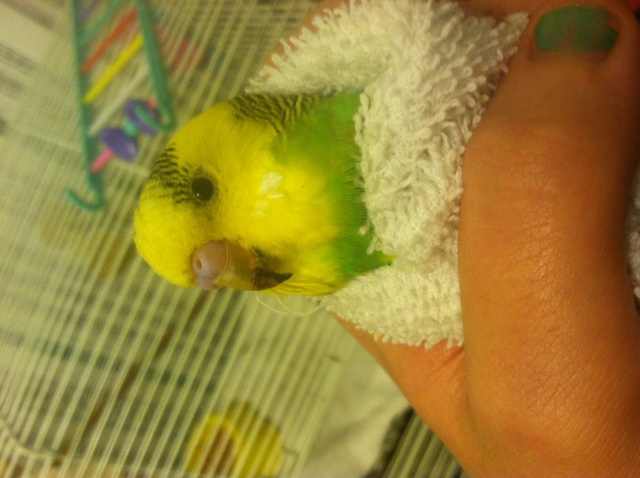 Flakey beak and discoloration
Question
Beak
Hi I have two parakeets. One is no
Flakey beak and discoloration
Question
Beak
Hi I have two parakeets. One is no
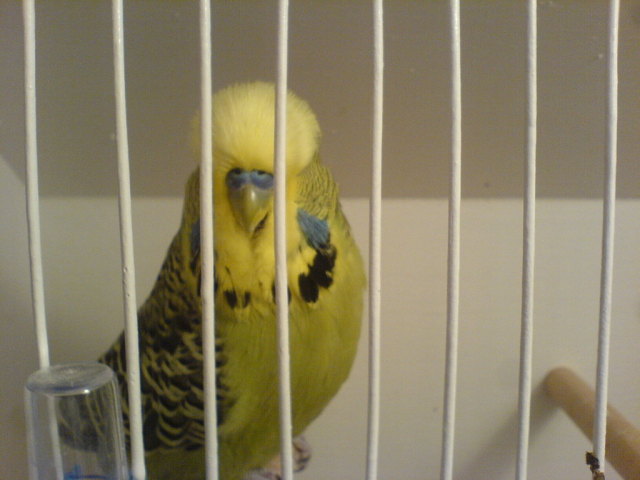 Parakeet dots
QuestionQUESTION: My parakeet Tweety which we believe i
Parakeet dots
QuestionQUESTION: My parakeet Tweety which we believe i
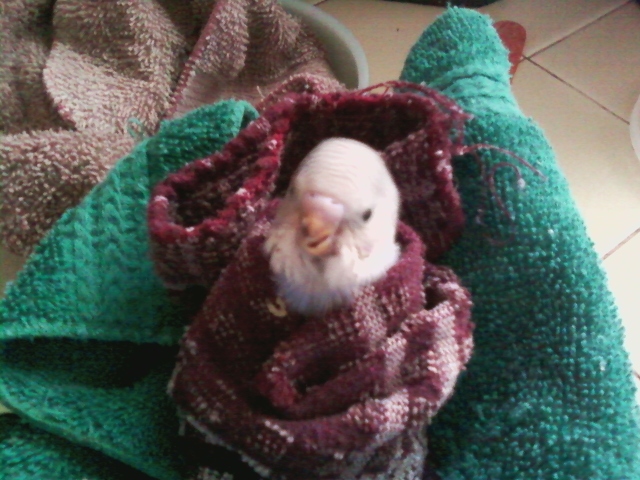 Splayed legged parakeet baby
Question
Marvin
I have a baby parakeet who is about 3-4
Splayed legged parakeet baby
Question
Marvin
I have a baby parakeet who is about 3-4
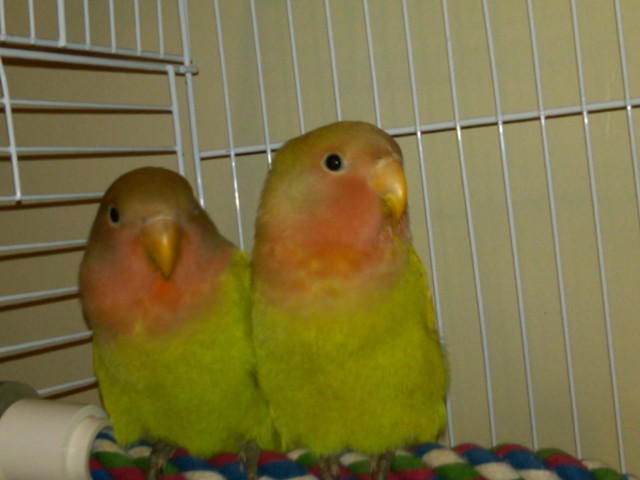 discolored beak
Question
lovebirds beaks
To Whom it may concern:
We re
discolored beak
Question
lovebirds beaks
To Whom it may concern:
We re
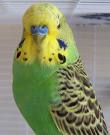 cant tell the sex of my budgier
QuestionQUESTION: Hi! I have 2 new budgies (given as a
cant tell the sex of my budgier
QuestionQUESTION: Hi! I have 2 new budgies (given as a